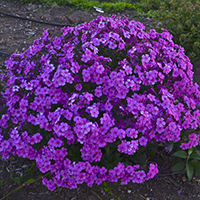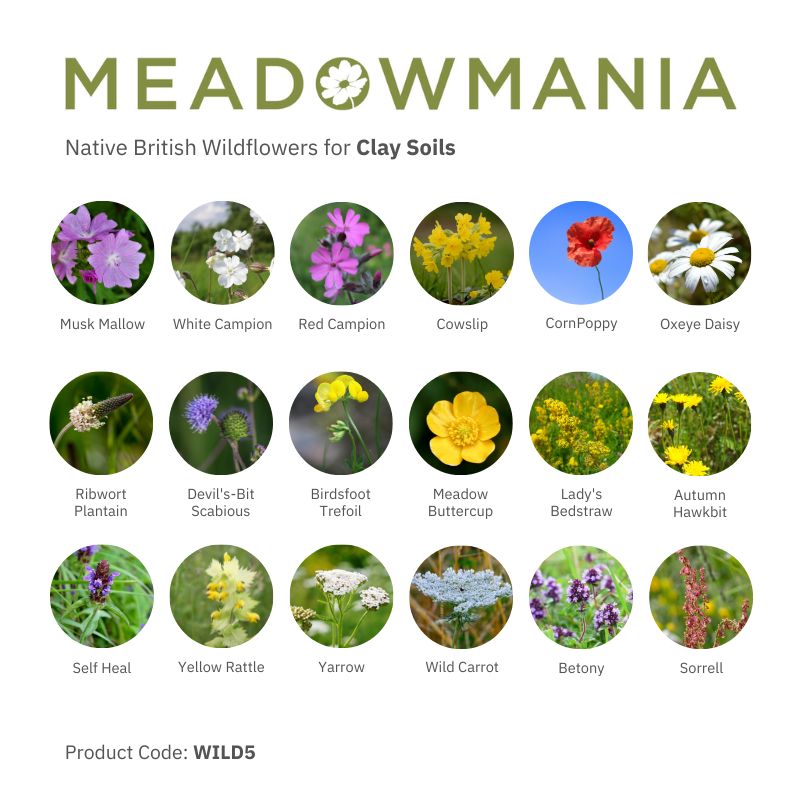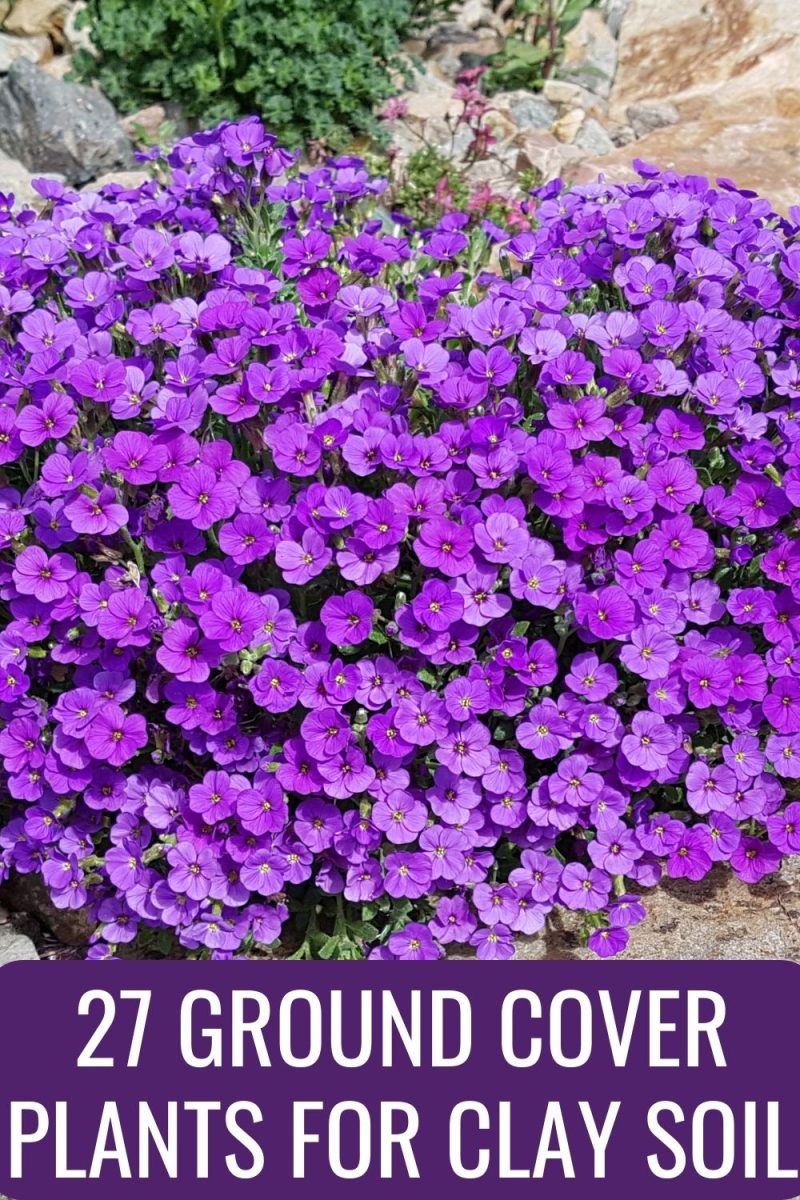Understanding Clay Soil: Its Characteristics and Challenges
Clay soil is a unique and challenging growing medium that requires special consideration when selecting flowers. Its dense and poorly draining nature can make it difficult for plants to grow, as it can lead to waterlogged soil and a lack of oxygen for roots. When searching for the best flowers for clay soil, it’s essential to understand the specific needs of plants in these conditions.
One of the primary characteristics of clay soil is its high water-holding capacity. While this can be beneficial in dry climates, it can also lead to waterlogged soil and root rot in wetter conditions. Additionally, clay soil can be prone to compaction, making it difficult for roots to penetrate and for water to drain.
Despite these challenges, many flowers are well-suited for clay soil and can thrive in these conditions. By understanding the characteristics of clay soil and selecting plants that are adapted to these conditions, gardeners can create beautiful and thriving gardens. Some of the best flowers for clay soil include perennials, annuals, and native wildflowers that are specifically adapted to these conditions.
When working with clay soil, it’s essential to consider the specific needs of the plants. This includes factors such as root depth, moisture tolerance, and nutrient requirements. By selecting plants that are well-suited to clay soil, gardeners can create a thriving and low-maintenance garden that requires minimal care and attention.
How to Choose the Right Flowers for Clay Soil
When it comes to selecting the best flowers for clay soil, there are several factors to consider. One of the most important considerations is the root depth of the plant. Plants with deep roots, such as coneflowers and black-eyed susans, are well-suited for clay soil because they can tolerate the dense and poorly draining conditions.
Another important factor to consider is the moisture tolerance of the plant. Plants that are adapted to wet conditions, such as marigolds and zinnias, can thrive in clay soil. On the other hand, plants that prefer well-draining soil, such as succulents and cacti, may not be the best choice for clay soil.
Nutrient requirements are also an important consideration when selecting flowers for clay soil. Plants that require a lot of nutrients, such as roses and peonies, may not be the best choice for clay soil because it can be difficult to provide them with the necessary nutrients. On the other hand, plants that are adapted to poor soil conditions, such as native wildflowers, can thrive in clay soil.
In addition to these factors, it’s also important to consider the growth habits and bloom times of the plants. Plants that have a similar growth habit and bloom time can be combined to create a beautiful and harmonious garden. For example, combining coneflowers and black-eyed susans can create a stunning display of color and texture.
By considering these factors, gardeners can choose the best flowers for clay soil and create a beautiful and thriving garden. Whether you’re looking for low-maintenance perennials, vibrant annuals, or native wildflowers, there are many options to choose from. With a little planning and research, you can create a stunning garden that will thrive in clay soil.
Top Perennials for Clay Soil: Low-Maintenance Options
When it comes to choosing the best flowers for clay soil, perennials are an excellent option. These low-maintenance plants come back year after year, providing a beautiful display of color and texture to the garden. Here are some top perennial flowers that thrive in clay soil:
Coneflowers (Echinacea) are a popular choice for clay soil gardens. These drought-tolerant plants produce large, showy flowers in shades of pink, purple, and white. They are also a favorite of pollinators, attracting butterflies and bees to the garden.
Black-eyed Susans (Rudbeckia) are another perennial flower that excels in clay soil. These bright yellow flowers with dark centers are a classic choice for gardens, and they attract a variety of pollinators. They are also relatively low maintenance, requiring only occasional watering and fertilization.
Bee Balm (Monarda) is a fragrant perennial flower that thrives in clay soil. Its red, pink, or purple flowers attract hummingbirds and butterflies, and its leaves have a minty flavor that can be used in teas and salads.
Other perennial flowers that do well in clay soil include Daylilies (Hemerocallis), Coral Bells (Heuchera), and Catmint (Nepeta). These plants are all relatively low maintenance and can tolerate the dense, poorly draining conditions of clay soil.
When choosing perennials for clay soil, be sure to select plants that are adapted to the local climate and soil conditions. This will ensure that they thrive and come back year after year, providing a beautiful display of color and texture to the garden.
Annuals that Excel in Clay Soil: Vibrant and Resilient Options
Annual flowers are a great option for clay soil gardens, as they can add a pop of color and texture to the garden without requiring long-term maintenance. Here are some annual flowers that excel in clay soil:
Marigolds (Tagetes) are a popular annual flower that thrive in clay soil. These bright yellow and orange flowers are easy to grow and can tolerate the dense, poorly draining conditions of clay soil. They also repel nematodes, whiteflies, and other pests that can harm plants.
Zinnias (Zinnia) are another annual flower that excel in clay soil. These colorful flowers come in a variety of shapes and sizes and are easy to grow from seed. They attract butterflies and hummingbirds to the garden and can tolerate the hot, dry conditions of clay soil.
Petunias (Petunia) are a low-maintenance annual flower that thrive in clay soil. These trumpet-shaped flowers come in a variety of colors, including pink, purple, and white, and can trail down walls or containers. They are also heat-tolerant and can thrive in the hot, dry conditions of clay soil.
Other annual flowers that do well in clay soil include Snapdragons (Antirrhinum), Sunflowers (Helianthus), and Cosmos (Cosmos). These plants are all relatively easy to grow and can tolerate the dense, poorly draining conditions of clay soil.
When growing annual flowers in clay soil, be sure to provide them with adequate sunlight and water. Most annual flowers require at least 6 hours of direct sunlight per day and consistent moisture to thrive. Also, be sure to fertilize them regularly to promote healthy growth and blooming.
Native Wildflowers for Clay Soil: Supporting Local Ecosystems
Native wildflowers are an excellent choice for clay soil gardens, as they are adapted to the local climate and soil conditions. These plants have evolved over time to thrive in the dense, poorly draining conditions of clay soil, and they provide a range of benefits for the environment and wildlife.
One of the most significant advantages of native wildflowers is their ability to attract pollinators and support biodiversity. Plants like coneflowers, black-eyed susans, and butterfly milkweed are rich in nectar and pollen, making them a favorite of bees, butterflies, and other pollinators. By incorporating native wildflowers into your clay soil garden, you can create a haven for local wildlife and support the health of the ecosystem.
Native wildflowers also require less maintenance than non-native plants, as they are adapted to the local climate and soil conditions. They are often more resistant to pests and diseases, and they require less watering and fertilization. This makes them an excellent choice for gardeners who want to create a low-maintenance garden that is also environmentally friendly.
Some examples of native wildflowers that thrive in clay soil include:
Butterfly milkweed (Asclepias tuberosa): This plant is a favorite of monarch butterflies and is rich in nectar and pollen.
Ironweed (Vernonia spp.): This plant is a favorite of bees and butterflies and produces a range of colors, including purple, pink, and white.
Coreopsis (Coreopsis spp.): This plant is a favorite of bees and butterflies and produces a range of colors, including yellow, pink, and purple.
By incorporating native wildflowers into your clay soil garden, you can create a beautiful and environmentally friendly space that supports local wildlife and biodiversity.
Flower Combinations for Clay Soil: Creating Harmonious Gardens
Creating a beautiful and harmonious garden in clay soil requires careful consideration of flower combinations. By selecting flowers that complement each other in terms of color, texture, and growth habits, you can create a stunning display of blooms that thrive in clay soil.
One way to create a harmonious garden is to combine flowers with different bloom times. For example, you can pair early-blooming flowers like crocuses and daffodils with later-blooming flowers like coneflowers and black-eyed susans. This will create a continuous display of color throughout the growing season.
Another way to create a harmonious garden is to combine flowers with different textures. For example, you can pair smooth-leaved flowers like hostas and daylilies with fuzzy-leaved flowers like lamb’s ear and dusty miller. This will add depth and interest to your garden.
When selecting flower combinations for clay soil, be sure to consider the growing conditions of each plant. For example, if you’re pairing a plant that prefers full sun with a plant that prefers partial shade, be sure to provide the necessary shade for the latter plant.
Some examples of flower combinations that thrive in clay soil include:
Coneflowers and black-eyed susans: These two plants have similar growing conditions and bloom times, making them a great combination for clay soil.
Marigolds and zinnias: These two plants have different bloom times and textures, making them a great combination for adding depth and interest to your garden.
Daylilies and hostas: These two plants have different textures and growth habits, making them a great combination for adding variety to your garden.
By creating a harmonious garden with a variety of flower combinations, you can add beauty and interest to your clay soil garden.
Expert Tips for Growing Flowers in Clay Soil
Growing flowers in clay soil can be challenging, but with the right techniques and strategies, you can optimize flower growth and create a beautiful garden. Here are some expert tips for growing flowers in clay soil:
Soil Preparation: Before planting flowers in clay soil, it’s essential to prepare the soil properly. Add organic matter like compost or well-rotted manure to improve the soil’s structure and drainage. This will help to break up the clay particles and create a more favorable growing environment for your flowers.
Watering: Clay soil can be prone to waterlogging, which can be detrimental to flower growth. To avoid this, make sure to water your flowers carefully, avoiding overwatering and ensuring that the soil has a chance to dry out slightly between waterings.
Fertilization: Flowers growing in clay soil may require additional fertilization to thrive. Use a balanced fertilizer that is specifically formulated for flowers, and follow the instructions on the label for application rates and timing.
Mulching: Mulching is an excellent way to retain moisture in the soil, suppress weeds, and regulate soil temperature. Use a thick layer of organic mulch like bark chips or straw to mulch around your flowers.
Some other expert tips for growing flowers in clay soil include:
Using raised beds or containers to improve drainage and soil structure.
Planting flowers that are specifically adapted to clay soil conditions.
Avoiding over-tilling the soil, which can damage the soil’s structure and create more problems.
Monitoring soil pH and adjusting it if necessary to ensure optimal flower growth.
By following these expert tips, you can create a beautiful and thriving flower garden in clay soil.
Common Mistakes to Avoid When Planting in Clay Soil
When planting in clay soil, there are several common mistakes to avoid in order to ensure the health and success of your flowers. Here are some of the most common mistakes to watch out for:
Overwatering: Clay soil can be prone to waterlogging, which can be detrimental to flower growth. Avoid overwatering your flowers, and make sure the soil has a chance to dry out slightly between waterings.
Under-draining: On the other hand, clay soil can also be prone to under-draining, which can cause water to collect in the soil and lead to root rot. Make sure to provide adequate drainage for your flowers, either by using raised beds or containers or by adding organic matter to the soil to improve its structure.
Neglecting soil amendments: Clay soil can be dense and poorly draining, which can make it difficult for flowers to grow. Neglecting to add soil amendments such as compost or well-rotted manure can exacerbate this problem. Make sure to add these amendments to the soil to improve its structure and fertility.
Planting flowers that are not adapted to clay soil: Not all flowers are adapted to the dense and poorly draining conditions of clay soil. Make sure to choose flowers that are specifically adapted to clay soil conditions, such as coneflowers, black-eyed susans, and bee balm.
Not mulching: Mulching is an excellent way to retain moisture in the soil, suppress weeds, and regulate soil temperature. Make sure to mulch around your flowers to provide them with the best possible growing conditions.
By avoiding these common mistakes, you can create a beautiful and thriving flower garden in clay soil.








